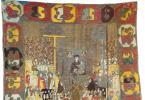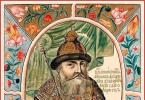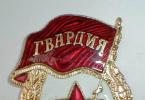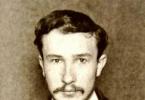Patrimony is the most important phenomenon that existed in medieval Western Europe and in Russia. This was the name of the land, along with farm buildings and other property, as well as dependent peasants. This word has the same root as in the words "father", "homeland", which indicates to us that the patrimony was inherited, was the property of the family.
The patrimony appeared in Ancient Rus when the power of princes and boyars was taking shape. The princes distributed lands to members of their squads and other representatives of the nobility. As a rule, it was a service award or some kind of outstanding service. There was also another category of landowners - the highest church hierarchs and monasteries.
The estate was transferred to the owner and his family in full undivided possession, without any conditions. It could be inherited, donated, sold. In his domain, the owner was the rightful owner. He not only enjoyed the results of the peasants' activities, that is, ensured his existence. Within the limits of the possessions, the patrimonial man repaired the court, resolved disputes, etc.
Fiefdom in Ancient Russia
The institution of hereditary land tenure played a huge role in the formation of medieval states, including Ancient Russia. In those days, the land was the main means of production. The one who owned the land could influence all spheres of society. Thanks to the activities of the sovereign nobility, law, legal proceedings, economics, church and state foundations were formed.
During the period of feudal fragmentation, boyars and princes were the main owners of estates. Free peasants also owned land, but only in the form of communal property. Gradually, the situation in the state changed: Russia freed itself from the Mongol conquest, the processes of collecting land and the centralization of power in the hands of the Moscow Grand Dukes began. In such a difficult situation, the princes were forced to limit the rights and freedoms of the boyars. 
The old nobility gradually began to be replaced by nobles - people who received their privileges for service and used them only as long as they served. This is how a new form of land ownership appeared - estates.
Fiefdom and estate - what is the difference
The most important difference between estates and estates is their conditional and impersonal character. It happened like this: the Moscow princes had to wage wars, pacify rebellious areas and protect their borders. There was a need for a large number of service people. To provide for the servants and their families, they were allocated estates - land with peasants.
Initially, the nobleman owned the estate only during the period of his service and could not pass it on by inheritance. The estate remained state property - it was given to the servant for use and alienated at the end of the service.
Subsequently, two parallel processes took place. The Grand Dukes (who, starting with Ivan the Terrible, began to be called Russian tsars) increasingly curtailed the rights of the boyars. Restrictions were imposed on the ownership of the estates, and the estates were simply taken away from some of the disagreeable boyar clans. In addition, the boyars were forced to serve without fail. A significant part of the service people were recruited from boyar children, who from now on could not use the privileges of their fathers, without bringing benefit to the country.
At the same time, estates became inherited property. So the powers that be stimulated the nobles to devotional service. In fact, by the beginning of the 18th century, the estate and the estate had become one and the same. This issue was finally resolved by Peter the Great, who issued a decree on single inheritance. All lands that were formerly called estates or estates, from that moment began to be called estates. 
In the history of our state, this had far-reaching consequences. A class of landowners was formed who owned vast lands and on the basis of inherited property. Later, the nobles received "freedom": their duty to serve was abolished, and the estates, along with the peasants, remained. The system "land in exchange for service to the Fatherland" lost its force, which led to subsequent social upheavals.
In Russkaya Pravda, the community is known under two terms - peace and rope. The world, or the rope, is a territorial-communal organization. Its members know the boundaries of their territory, know each other, help each other in case of unforeseen circumstances. For example, there was a murder on the territory of the Vervi. In the event that the killer is not found, the members of the vervi bear collective responsibility - a custom that was established during the period of the dominance of the tribal system. Wild vira became a novelty for the community - the contributions of community members to the “fund for payment of fines”. Members of the Vervi own land on a private basis, have their own movable property, and run an individual farm. Meadows, forests and waters are shared.
However, wealthy people begin to stand out from the members of the community. They have more land than ordinary members of the community; they do not cultivate it personally, but use the labor of their servants. They are well armed, can fortify their homes, can defend themselves and their property, or organize an attack themselves, becoming the head of a squad. Some of these wealthy people descend from clan elders, another, more numerous, achieved wealth and strength, having managed to subjugate a large number of people using non-economic methods of coercion. It is in this process of the emergence of large landownership that the roots of serfdom must be sought.
In the treaties between Russia and the Greeks, we see these people in fairly large numbers. These are, first of all, the princes themselves and their relatives, as well as the nobility around them - the boyars. Princes, their relatives and boyars are large landowners.
They have their own courtyards, sometimes fortified castles, landlord's arable land, cattle, but their farm does not work for the market, but for the immediate needs of the courtyard itself.
If we want to observe the first serfs in our sources, we must first of all look into the economic organization of the boyar or princely estates. In the center of the patrimony is the landowner's courtyard, in which either he himself or his authorized representative, the fire-owner, lives. About Ognischanin S.M. Soloviev says: “The later term“ nobleman ”also serves as an explanation of the word“ fire ”, meaning a person who belongs to the court, the prince’s house, and does not have his own yard or house, therefore, even under fire, there is no need to understand a person who has his own fire. Under the firemen was meant only a husband, a prince of the highest rank, a boyar, a princely duma member, but not a grid, not an ordinary member of the squad, who actually did not belong to the fire or the princely court. The tiun princes, as can be seen from Pravda, belonged to the firemen, but not in general, but only the fire and equestrian. "
Ognischanin subordinated to the driveway (collector of receipts from the population), the manager of stables and tiunas; their lives are guarded by the highest fine - 80 hryvnia. This is followed by the village and military (plowed) elders; their lives are guarded by a fine of only 12 hryvnia.
In addition to the princely or boyar dwelling and premises for the patrimonial administrative apparatus, Russkaya Pravda mentions outbuildings - a cage. Also called the border separating field areas, for violation of which a fine of 12 hryvnia is imposed (for comparison: theft of a horse is punishable by only 3 hryvnia).
After the list of persons belonging to the patrimonial administration, there is the lord's servants: “And for a ryadovych 5 hryvnias.
It’s the same for boyarsk ”. In this case, the fine is not levied for the murder, but as compensation for the lost labor. All of them are under the jurisdiction of the prince (boyar), they cannot be judged without the permission of the lord. The same limitation exists in the attitude of the fire-dweller, the tiun, and the smerd, although there are differences.
Any inheritance could be called “patrimony” (from the word “father”) in medieval Russian documents. But more often this word was used in a specific context, and this is how it is used by medieval historians. As a legal term, the concept of estates was used until the 18th century, and for another century - as a conventional name.
Let everyone keep their fatherland ...
This formulation is provided in the decision. It was about the inviolability of neighboring estates. Accordingly, by "fiefdom" the princes meant the lands controlled by each of them at that time, together with the people inhabiting them.
The word is used in different editions of "Russian Pravda" and earlier. According to these documents, one can understand that the patrimony is the possession of a large feudal lord (prince or boyar), which he inherited from his ancestors and which is assigned to his family.
This concept includes not only the land allotment, but also necessarily the subjects living on it. The landowner has special rights in relation to them - he receives payments, demands a duty, carries out a court.
Initially, only the possessions of the Kiev princes were called fiefdoms. That is, the concept essentially approached the "territory of the state." Then they began to call the possessions of the rich boyars and appanage princes in the same way. Thus, the fiefdom was a state within a state, and the owner received the right to exercise part of the state functions. Among other things, he could distribute part of the land to his servants “for feeding,” that is, as a reward for service. But such possession did not become patrimonial - it could be inherited, but only on the condition that the heir suited the overlord and would also serve him.
The patrimony could be obtained in other ways: inherited, as a gift, bought or conquered.
Not quite property
Most historians point out that the patrimony was already the private property of a boyar in the 11th century. This is not entirely true. The possession did not belong to a person, but to a family. It could be disposed of (up to and including sale and donation), but only with the consent of the family. The law stipulated the rights of heirs (spouses, children, brothers) to patrimonial possession. But it is true that a boyar could have several estates at a considerable distance from each other, and his possessions could be on the land of one prince, while he served with another. In this, the patrimony differs from the feudal estate, which could also be inherited, but only on the condition of serving in favor of the supreme overlord of the land.
Patrimonial rights reached their maximum in the era of feudal fragmentation. The strengthening of the central government almost immediately came into conflict with these rights. In the 16th century in the Muscovy state, the restriction of the rights of patrimonials began. he acted even easier - he reduced the number of patrimonial boyars, subjecting them to reprisals and confiscating possessions in favor of the crown. During the period
The first appeared during the times of Kievan Rus (X-XII centuries) when private feudal ownership of land was formed. At this time, it was one of the main forms of land ownership and belonged to large landowners (princes, boyars).
The princes inherited from their father - this was the main difference from other forms of land ownership. The term itself comes from the Old Russian word "fatherland" - that is. despair, father's property.
As a rule, the possessions of noble boyars consisted of several, which were usually located in different places. Boyars could increase the number and size by seizing communal peasant lands, buying and exchanging them.
There were different categories: acquired, donated, generic. The owners could dispose of the land: sell, divide, exchange or lease the land, but only between relatives. Without the consent of the members, a kind could not sell or exchange it. This suggests that, although it was private property, it has not yet been equated with the right of unconditional ownership of it.
Along with princes and boyars, members of their squads, monasteries, and higher clergy owned. After the adoption of Christianity, ecclesiastical patrimonial land tenure was formed, the owners of which were representatives of the church hierarchy (metropolitans, bishops) and large monasteries.
The composition consisted of:
- arable land
- buildings
- inventory
- animals
- peasants living on these lands.
In relation to the population, their owners enjoyed a number of rights and privileges in the field of legal proceedings, collection of taxes and other things. The rights were enshrined in the code of laws - Russian Truth XI-XII centuries.
The large ones formed their own administrative and economic apparatus, which was engaged in organizing their daily life. The owner of the land used administrative and judicial power over the population living on his land, and collected taxes from them. Despite this, the inhabitants were free and, if desired, could move to other estates.
In addition to general rights, they had immunity privileges in court, when collecting taxes and paying trade duties.
Later, the administrative and judicial power of the owners was limited, and then they were completely deprived of it.
By the 13th-15th centuries, during the fragmentation of Russia, it had become the predominant form of land ownership, displacing the state form of ownership.
By the end of the 15th century, the estate was developing along with it.
In the 1550s, they were equated with the nobility in relation to military service, and the right to ancestral ransom was also limited. A serious blow to the nobles was dealt by the oprichnina terror of Ivan the Terrible. In the second half of the 16th century, many large ones sold or mortgaged their lands. As a result, at the end of the 16th century, the manor became the predominant form of feudal land tenure.
Since the beginning of the 17th century, land tenure has increased again. The government rewarded the nobles for their service, distributing them the land of the old. The legal rights of the owners of the estates expanded, the process of erasing the distinctions between the estate and. At the end of the 17th century, in the central regions of the country, hereditary () land ownership prevailed over local (official) land ownership.
By the beginning of the 18th century, estates were ordered and called the same real estate or patrimony. By the 18th century, the owners of the estates had become equal in rights. And from the end of the 16th century, a new law was introduced, according to which the estate could be inherited, but the new owner had to also serve the state, like the previous one. In the 18th century, by the Decree of March 23, 1714 on single inheritance, estates were legally equated to and merged into one type of land ownership - an estate.
Since then, the concept was sometimes used in Russia in the 18th-19th centuries to denote noble land ownership.
Sources:
- Free encyclopedia Wikipedia - http://ru.wikipedia.org
- Encyclopedic Dictionary of F.A. Brockhaus and I.A. Efron. - S.-Pb .: Brockhaus-Efron. 1890-1907
- Encyclopedic Dictionary. 2009 onwards
VOTCHINA, a type of feudal landed property. It arose in the Old Russian state in the 10-11 centuries as a hereditary clan (later family) or corporate ownership ("fatherland"). The owners of the patrimony were princes, boyars, and the church. The formation of Russian principalities and lands from the middle of the 11th century led to the fact that the inviolability of estates-reigns was confirmed by the Lyubech congress in 1097. In the 13-15th centuries, patrimony was the main type of land tenure, which was replenished in the process of developing new territories, as well as through the seizure of communal black lands, grants, purchases, etc. The formation of the system of patrimonial land tenure in the Novgorod Republic was completed by the middle of the 14th century. From the end of the 14th century, an increase in the number of monastic estates in North-Eastern Russia began. In the second half of the 15th century, a significant part of this territory was also covered by princely and boyar estates. Within the framework of patrimonial land tenure, there was no right of enthronement. Most of the inherited lands were mortgaged, split between numerous heirs, or sold and given to monasteries for posthumous commemoration. The landowners had a number of privileges (judicial, financial, etc.). In the 15-17th centuries, along with the fiefdom, the estate existed as a conditional form of land tenure. In the late 15th - early 16th centuries, many large landowners of the Novgorod and Pskov republics, the Tver Grand Duchy were deprived of their estates by the Grand Dukes of Moscow. At the same time, the estates of large monasteries grew (Trinity-Sergiev, Joseph-Volotsky, Kirillo-Belozersky, etc.). Distinguished clan ("old"), purchased, since the 1610s also served fiefdoms. Many patrimonials lost their possessions during the oprichnina period, sold or mortgaged their estates, wishing to avoid their confiscation by the state. In the 1580s, monasteries were prohibited from buying or receiving estates in the form of contributions from individuals. In the 17th century, patrimonial land tenure began to grow again. The distinction between the estate and the fiefdom gradually faded in the 17th century. At the end of the 17th century, patrimonial land tenure significantly exceeded the landed property. Decree of Tsar Peter I dated 23.3 (3.4). 1714 on single inheritance legally formalized the final merger of the estates and estates. Most of the monastic and church estates were liquidated during the secularization of 1764. In the 18-19 centuries, the term "patrimony" was used in relation to any hereditary land property, while maintaining the legal distinction between a clan patrimony and an acquired one.
Lit .: Sergeevich V.I. Lectures and research on the ancient history of Russian law. 3rd ed. SPb., 1903; Veselovsky S. B. Feudal land tenure in North-Eastern Russia. M .; L., 1947.Vol. 1; Grekov B. D. Peasants in Russia. 2nd ed. M., 1952-1954. Book. 1-2; Cherepnin L. V. Formation of the Russian centralized state in the XIV-XV centuries. M., 1960; Ivina L.I. Large patrimony of North-Eastern Russia at the end of the XIV - 1st half of the XVI century. L., 1979; Yanin V.L. Novgorod feudal patrimony: (Historical and genealogical research). M., 1981; Kobrin VB Power and property in medieval Russia (XV-XVI centuries). M., 1985; Shvatchenko OA Secular feudal estates of Russia in the 1st third of the 17th century. M., 1990; he is. Secular feudal estates in Russia in the 2nd half of the 17th century. M., 1996; he is. Secular feudal estates of Russia in the era of Peter I. M., 2002; Cherkasova M.S. M., 1996; she is. A large feudal estate in Russia at the end of the 16th-17th centuries. (according to the archive of the Trinity-Sergius Lavra). M., 2004; Milov L.V. The Great Russian Plowman and the Peculiarities of the Russian Historical Process. 2nd ed. M., 2006.




